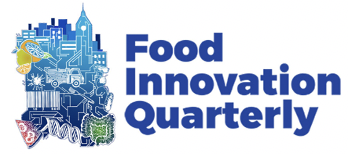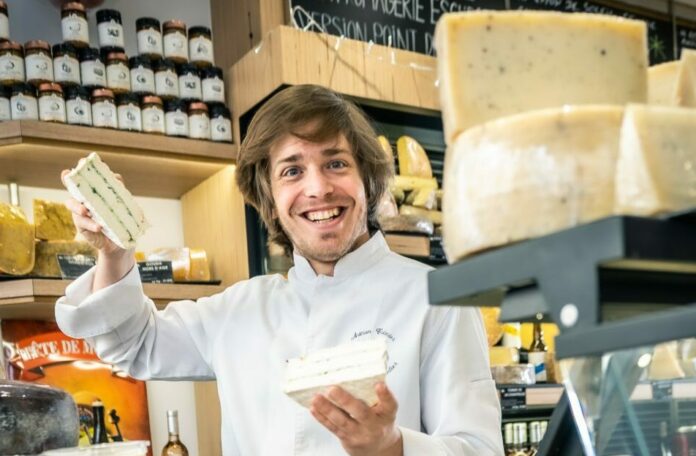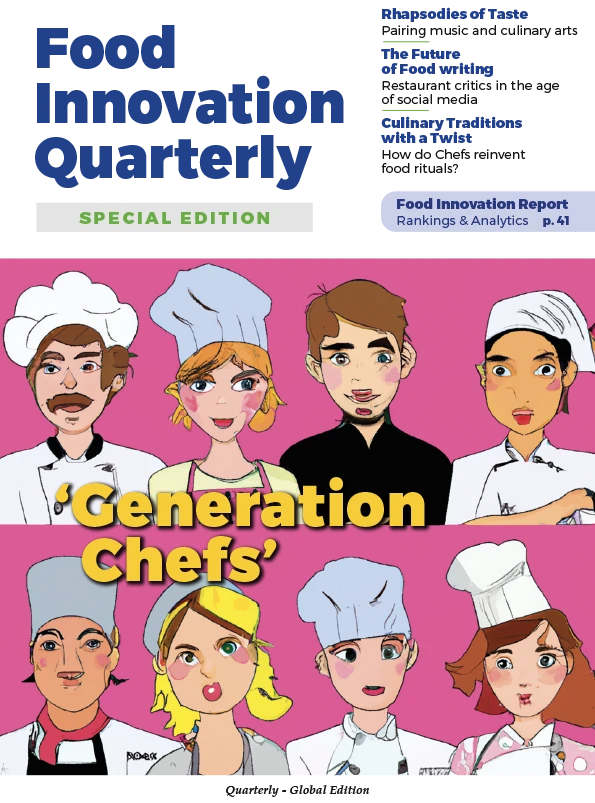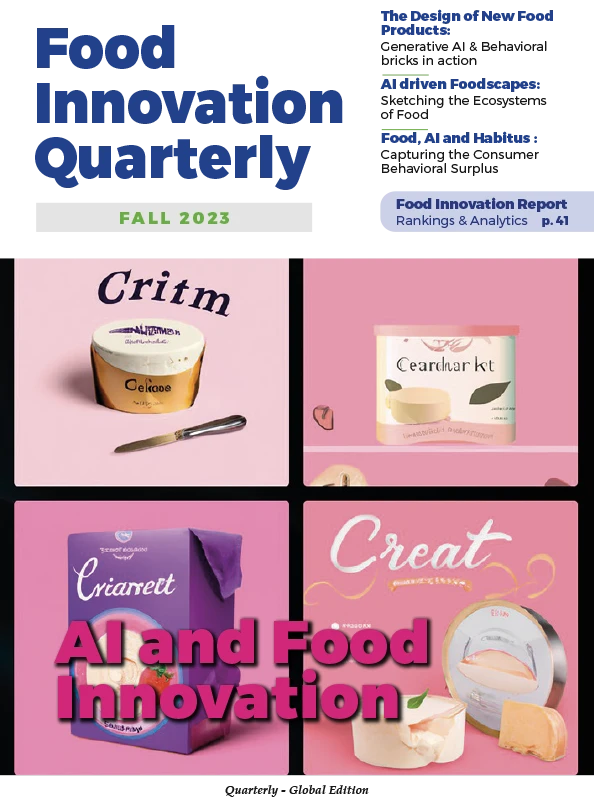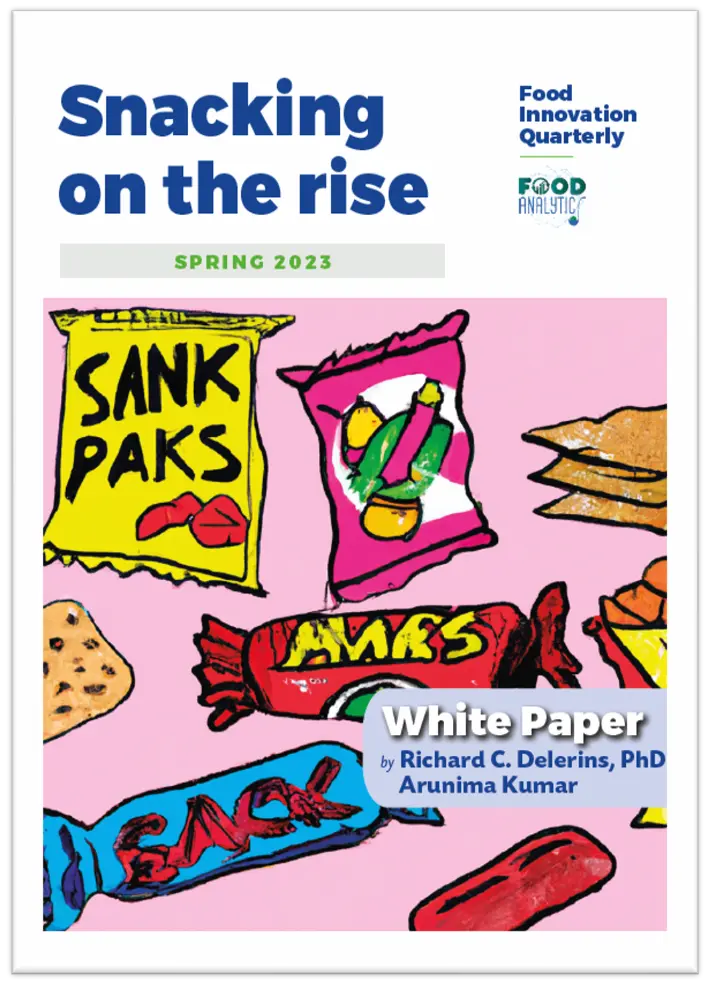Food Innovation Quarterly: What is the most important, guiding principle of your work?
Augustin Denous: It is all about respect: for the producers and the animals, the customers, my team. And I am fascinated by cheese: it is a food, but also, and above all, a means of conveying pure emotion. It reconnects us with natural sensations and smells. Silence, heat, smell, milk is transformed into curds, cheese, and perfume. You can taste the stable in a sheep’s milk cheese, hints of apples in Camembert de Normandie and even mushrooms in Roquefort…
Yet there’s nothing natural about cheese. It’s an incredible human invention. A creation that has been passed down for over 10,000 years. Cheese-making skills require a high level of technique and knowledge. Knowing how to make cheese means paying constant attention to so many factors.
F.I.Q.: Why is it important to talk about Fromages Sauvages, wild cheeses?
A.D.: Today, the overwhelming majority of cheeses produced worldwide are manufactured using industrial methods. Automation is the rule. Cheese is reduced to its edible condition, a source of protein and fat. Cheese-making know-how has never been greater, and of course, technology is essential, but so is feeling. You can’t feed the soul with excel tables of ingredients.
There are still a number of farms, artisan dairies and small factories, where authentic cheeses are made. However, they face increasing difficulties, such as inflation, the rural employment crisis, or global warming. Their commitment is inversely proportional to the compensation they receive. They work much harder and earn much less.
F.I.Q.: That sounds pretty bleak.
A.D.: This is not to paint a miserabilist picture – quite the contrary. But the challenge for cheesemakers today is to pass on knowledge. Passing on the passion of these women and men who work with rustic animals to make authentic cheeses. The survival of fine cheeses depends on a better understanding of agricultural realities. This is my job and the job of all Crèmeries-Fromageries.
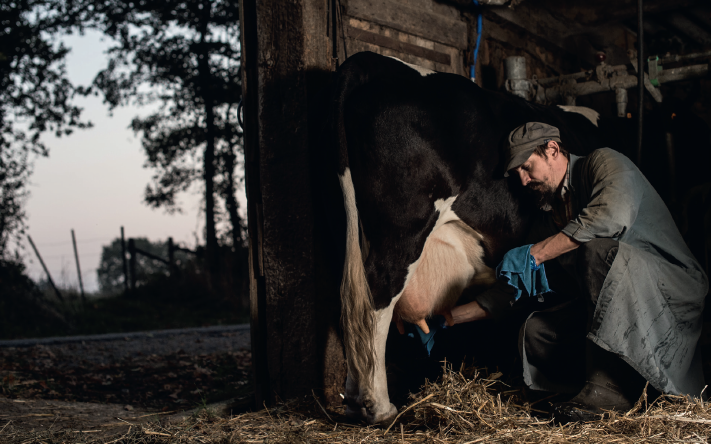
F.I.Q.: Making people understand?
A.D.: Yes. The more knowledge they have, the better they understand the efforts and costs involved – and the more they’ll enjoy! You know, cheese-making is all about giving milk a new shape, the very word cheese derives from the shaping of milk. In antiquity, we speak of caseus formaticus, cheese made in a mold.
In English-speaking countries, as well as in Spain, caseus becomes käse, cheese, queso. In Italy and France, formaticus gave rise to formaggio and fourmage in the Middle Ages, surviving to this day in the Fourmes d’Ambert, Montbrison and Valcivières cheeses.
The more you think about it, the more impressive it gets. Because then, little by little, techniques improved, and cheeses diversified. Each cheese became an expression of the terroir in which it was born. This terroir is the animals, mountains, wind and soil. Like a winemaker, the cheesemaker has a single objective: to transcribe an emotion and place into a food product. This rootedness has taken several centuries and led to the emergence of emblematic cheeses based on a particular region: Comté, Ossau-Iraty, Ste Maure de Touraine and so on.
F.I.Q.: This is what the AOP system is all about, and isn’t that protection and appreciation enough?
A.D.: Yes, theoretically Appellations d’Origine Protégée (AOP) protect this know-how and place of origin. Nevertheless, there is a massive trend towards standardization because they are not strict enough and simultaneously not adaptable. Ferments, essential for developing aromas, are duplicated in laboratories and homogenized. Animal breeds are disappearing in favor of productivity, with an over-representation of Prim’ Holsteins. Animals graze less fresh grass (15% of the average annual ration of a dairy cow). Know-how is promoted in advertising to sell this imaginary link to the land but in reality, practices are largely mechanized, and today’s cheese production is off-ground in the literal sense of the word.
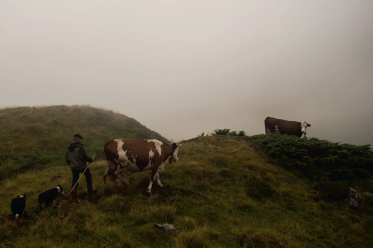
F.I.Q.: Why is the ground so important?
A.D.: Life stems from the ground. From humus, from people, from humanity. Guaranteeing our food safety means processing everything, erasing all randomness, and anticipating everything to achieve a standard that doesn’t change. Responding to consumer tastes, assumedly light, fresh, creamy taste, not too strong, with a fluffy crust. An authentic image, for a taste of plastic.
Instead of savoir-faire, it’s devoir-faire: the right way, the right ferments, the right flavors. Randomness and otherness are replaced by hygiene, production and lactation standards. Living things are objectified to make them accountable. At the same time, we’re selling experiences to «reconnect with nature» while discovering real life on the farm. Cutting roots and dreaming of summits: the art of human dissonance.
F.I.Q.: Human hubris?
A.D.: Yes. Cheese is a symptom of our Promethean urge. We want to master everything, know everything, build everything. The men and women who continue to make cheese conscientiously are passionate about it. Lovers of detail, they accept the unexpected, because that’s what craftsmanship is all about. Tame a material, not enslave it. To tame milk rather than make it captive to eternal, input-driven repetition.
We’ve never had so much cheese know-how. At the same time, the diversity of cheeses is disappearing faster than ever before. Those who continue to make cheese by listening and feeling tend to disappear. Craftsmanship rests on two pillars: passion and rigor, they allow to produce high-quality, meaningful cheeses. We are at a turning point. It’s vital that we restore these men and women to their rightful place as artisans of the land and taste.
F.I.Q.: Can you expand a bit more about your work as Crémier-Fromager?
A.D.: It could be summarized in one term: faire-savoir. The crèmerie-fromagerie is the ideal place to discover a beautiful display of mouth-watering cheeses. In France today, there are almost 4,000 crèmeries-fromageries. Whether at a market stall, a covered market or in a shop, the French are fortunate to still have a wide range of products on offer.
The profession of crémier first appeared in the early 19th century, with urbanisation. Creameries supplied city dwellers with milk, butter, eggs and cheese. In the 1970s, the development of hypermarkets decimated the profession. In the 2000s, new training courses brought a new lease of life to the profession. New profiles have emerged, and the massive phenomenon of professional reconversions has had a major impact on the sector over the last ten years.
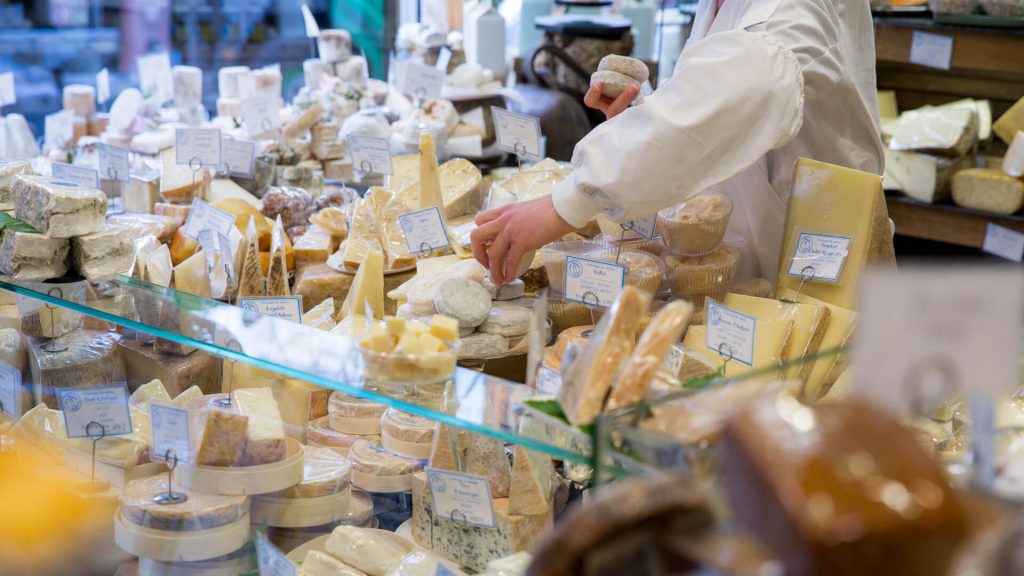
F.I.Q.: So all is well?
A.D.: Not really. Because when it comes to dairy products, you need to be lucky enough to go there in the first place. The vast majority of the population shops in hypermarkets and supermarkets, due to lack of time and for convenience. Going to a crèmerie-fromagerie is a matter of education and transmission.
Today, there’s nothing natural about going to a specialized shop where you’re asked: “Hello, what kind of cheese would you like?” There’s even fear of not knowing what to choose when faced with such a choice, the fact that you have to express your tastes, answer questions and listen to explanations… All this can intimidate people and prevent them from entering a specialized shop such as a crèmerie. The financial aspect is also decisive.
Many customers think that cheese is more expensive in a crèmerie than in a supermarket. Indeed, the visible price per kilo is often lower in a supermarket. But the hidden costs (ecological, social, animal welfare, etc.) will be much higher. What’s more, the contribution in terms of microbiological diversity will be much lower with standardized cheeses manufactured on a large scale and at lower cost.
F.I.Q.: What is the plan of action?
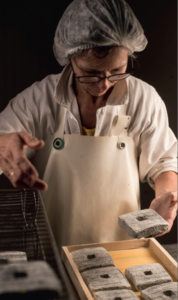
A.D.: In my opinion, the challenge for creameries over the next few years lies in one phrase: reaching out. To reach out to customers and producers, and become a real link between them. We are fortunate to have a profession that offers meaning at a time when very little else does. Cheese is an extraordinary gateway to the incredible power of eating well. Start with the senses to rediscover the essence. Propose a cheese that makes an impression, that dazzles, that shocks, in short, that provokes an emotion. That’s what it’s all about. Conveying emotions and then information. Who makes this tomme, with what animals, in what region?
All these stories shape our relationship with reality. Eating is a daily gesture. Eating well is a choice. Some people believe that good, healthy food is not accessible to everyone. That without pesticides and fertilizers we couldn’t feed everyone. That we can’t generalize about organic, local and farm produce. I disagree. I’m convinced that quality farming can become the majority. It’s a question of commitment and priority. Putting good food at the heart of our plates is a powerful gesture. To achieve this, we need to support paysans, real farmers. This means making very concrete choices. Go to your local retailer, encourage raw-milk production, favor local products. Offering good, beautiful cheeses, passing on the passion of the men and women who make them. It’s a lot and it’s nothing. Just like cheese.
Interview by Ursula Heinzelmann for Food Innovation Quarterly
